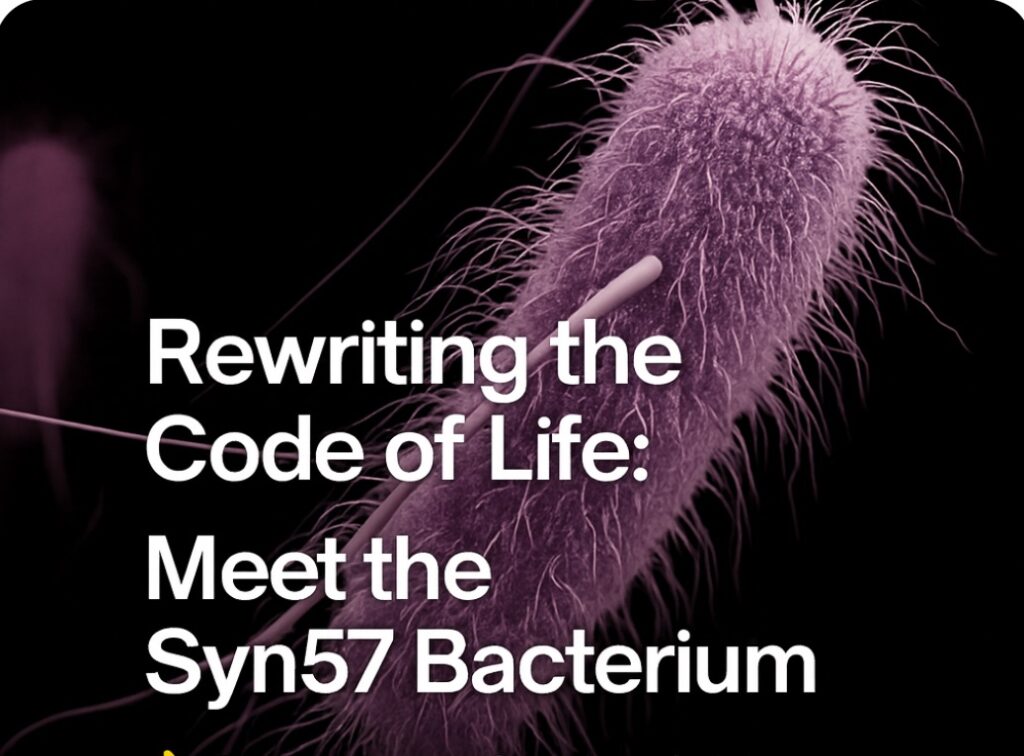In July 2025, scientists achieved something extraordinary: they reprogrammed the genetic code of a living organism, creating a bacterium named Syn57. This milestone pushes biology closer to programming — just like software.
🧬 From 64 Codons to 57
Every living organism uses a genetic alphabet made up of 64 codons (DNA “letters” that instruct cells how to build proteins). Researchers showed that life can still function with a reduced code of just 57 codons.
To create Syn57, they performed over 100,000 genetic edits, demonstrating for the first time that a cell can survive, grow, and divide using a simplified biological grammar.
🌱 Why It Matters
Even with fewer instructions, Syn57 thrives. This proves that the “recipe of life” is flexible and programmable, challenging the long-held belief that genetic code was unchangeable.
🚀 Future Applications
With this new biological freedom, possibilities open up:
Creating novel enzymes for biotechnology Designing safer vaccines Building virus-resistant cells Developing living factories to produce medicines, sensors, and bio-materials
🔒 Built-in Safety
Syn57 speaks a “genetic language” incomprehensible to natural organisms. This means it cannot share genes with bacteria or viruses in the environment — a natural biosafety layer that makes experiments safer.
🌍 Biology Meets Programming
Syn57 is only the beginning. Imagine artificial intelligence interpreting DNA like computer code, or chips built with living cells. The boundary between biology and technology is dissolving, and Syn57 is proof of concept.
✅ Inspired by the New York Times article “Scientists Are Learning to Rewrite the Code of Life” (Carl Zimmer, 2025).
👉 What do you think about programming life like software? Would you trust medicines or vaccines developed by engineered bacteria?

